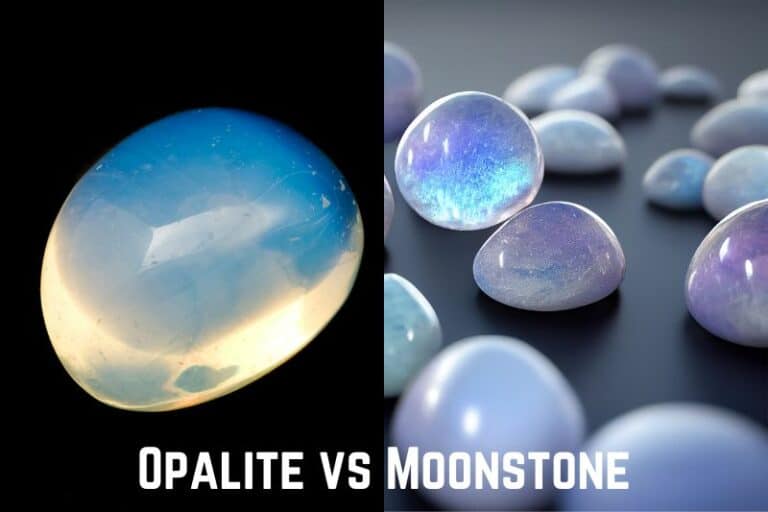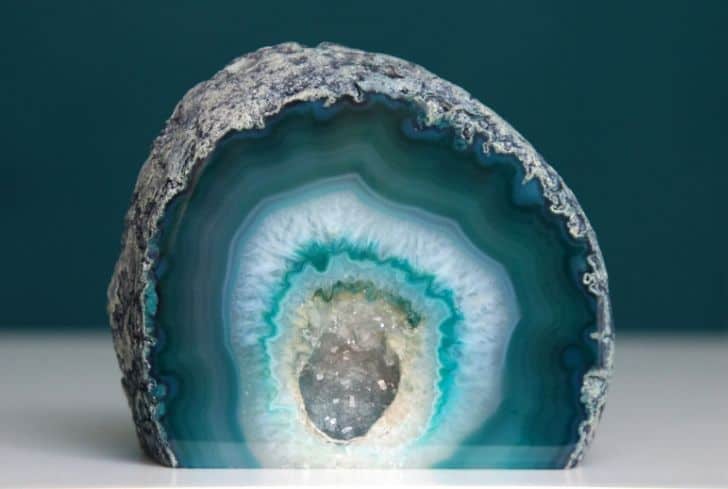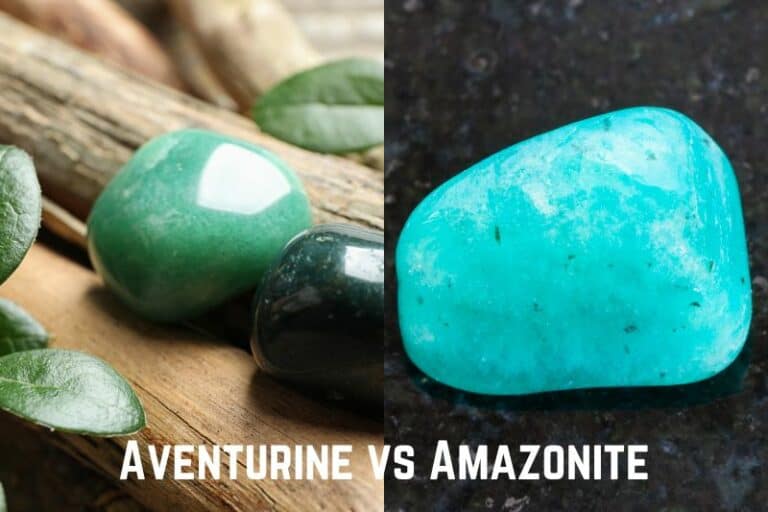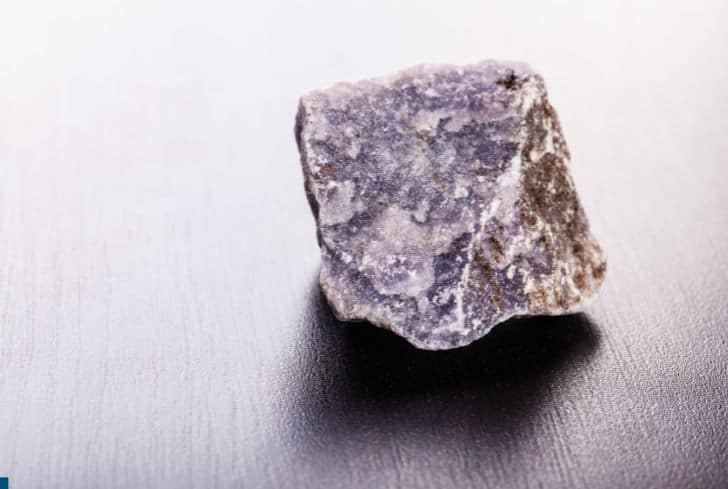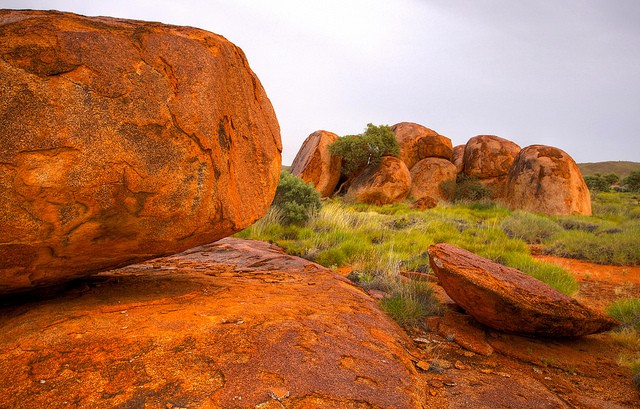Can Opalite go in the Water? (And Properties of Opalite)
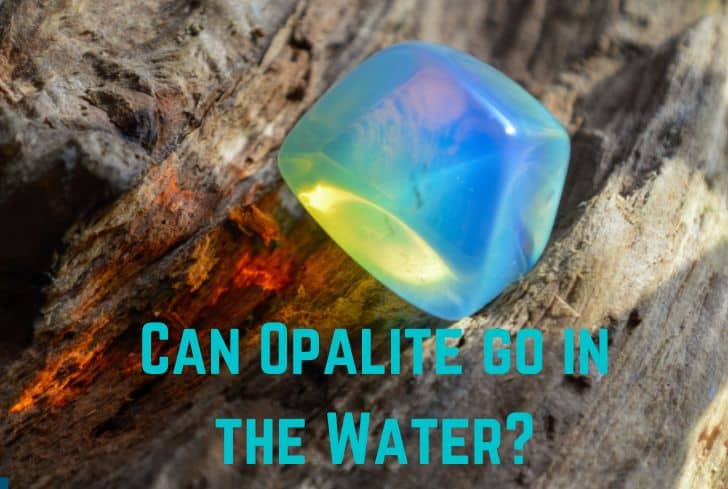
The term Opalite is used to refer to things two things. Firstly, it is used to refer to common opal, which is a natural stone that lacks play of color. Secondly, it is used as a marketing name for man-made opalescent glass that looks like opal and moonstone.
Have you ever wondered if Opalite is safe to go in the water? In this article, we are going to discuss just that. We will begin by looking at the properties of Opalite (both variants). Then we will discuss its interaction with water, salt, and moonlight. Finally, we will discuss how to clean it.
Read: Can Howlite Go in the Water?
Is Opalite Water Safe?
Opalite should not be put into water. Natural Opalite (common opal) has a value of 5-6.5 on the Mohs Hardness Scale, meaning that it’s a moderately strong stone. However, prolonged immersion in water will damage it. For the man-made variant of Opalite, water will have a less damaging effect, but it’s still not recommended.
Mohs Hardness Scale is a measure of a mineral’s relative resistance to scratching. Besides that, it also provides information about a mineral’s interaction with water. Usually, a value above 5.0 means that it is safe to go in the water.
With a value barely above the minimum limit, Opalite is not safe enough to be soaked under water. But for harder minerals too, it is generally not recommended to put them in water for long because it can dull their appearance and damage their structure.
Man-made Opalite is made up of glass or plastic, mixed with resins. Such a stone will be more resistant to water, but even in this case, it is better not to immerse the stone underwater for long.
What are the Properties of Opalite?
Opalite refers to two different things. First, it is a synonym for common opal, which is made up of tiny spheres of silicon dioxide. Its properties are:
- Appearance: Common opal is a variety of natural opal that does not exhibit the beautiful “play of color” (flash of bright light) that we see in precious opal. However, it comes in a wide range of colors like pink, yellow, and blue, making it a good choice for jewelry.
- Formation: Common opal is usually found in the same localities as precious opal, that is, areas associated with volcanic activity, like ashfalls. It is also found in sedimentary rocks in areas with an arid climate. The minimal rainfall dissolves silica and deposits it in fractures and cavities.
- Hardness: Common opal is a type of opal, and it has a value of 5-6.5 on the Mohs Hardness Scale. This means that it is not a very hard mineral and is prone to get damaged by scratches. It is also not very safe to immerse it in water for long.
Common opal is not very expensive, and it can be used to make beautiful cabochons, beads, and tumbled stones. It is found in Peru, Mexico, and Western Australia.
Opalite is also used to refer to man-made stones that have the appearance of opal but are composed of glass or plastic. They are usually called “imitation opal”/“opal simulant” in retail settings.
Man-made Opalite does not have the chemical properties of natural opal. They usually have a pearly or opalescent lustre. Using resins, they can be made to exhibit a play of color. Because of the high resin presence, these stones have lower hardness and lower specific gravity.
What Happens When You Put Opalite in water?
Opalite is a moderately hard mineral with a value of 5-6.5 on the Mohs Hardness Scale, just above the minimum value required for minerals to survive underwater. However, prolonged immersion in water will dull the appearance and damage the stone. This is true for both the natural and man-made variants of Opalite.
During prolonged soaking, water enters the crevices of stones and widens them. These fissures may not be visible at first but can slowly damage the structure of the stone. The stone will then become more brittle and might get break easily upon impact.
Read: Can Calcite Go in the Water?
Water also dulls the appearance of stones. It strips off their polish, making them lose their glow. Water encourages fissures, which damage the inner structure of the stone, and this can change the way light bounces inside the stone. So, the beautiful optical effects of the stone can be ruined.
Finally, when water comes into contact with stones, it can also react adversely with their elements. This is especially true for minerals that have iron content. The water reacts with the iron to form rust, severely damaging the stone.
Can Opalite go in Salt?
Yes, Opalite can go in salt. It has a value of 5-6.5 on the Mohs Hardness Scale, meaning that it’s a moderately strong mineral. Putting stones in a bed of dry salt is a common way of recharging them, and it is perfectly safe for Opalite. However, while surface contact with dry salt is safe, Opalite should not be put into salt water.
Salt, when dissolved in water, can enter the tiny crevices of the stone. Here, it remains even after the water evaporates and causes the cracks to widen. These fissures can slowly damage the structure of the stone over time, making it brittle.
But without water, salt cannot harm Opalite. Opalite’s hardness (5.0-6.5) is much greater than salt’s (2-2.5), so surface contact will not harm the crystal.
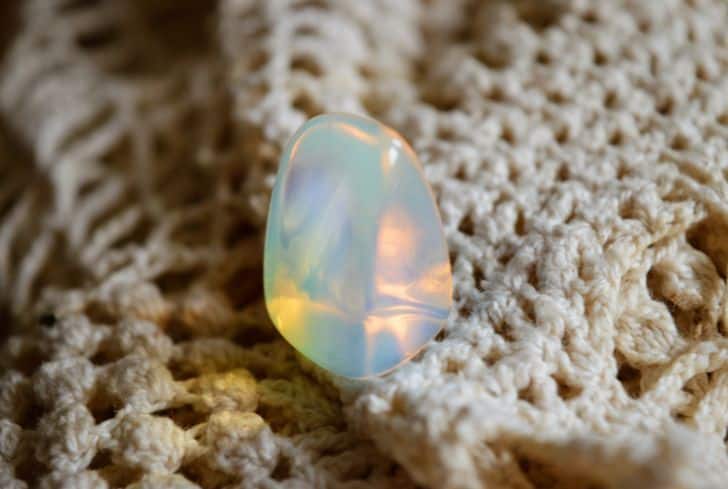
Can Opalite go in Himalayan Salt?
Yes, Opalite can go in Himalayan salt. Opalite has a value of 5.0-6.5 on the Mohs Hardness Scale and is a moderately hard mineral. While Opalite should not be put into water or salt water, it is safe to put the crystal into dry Himalayan salt.
Himalayan salt is rock salt that has a pink tint due to the presence of minerals. It is mined from Punjab in Pakistan and is usually a replacement for table salt. It is also used in food presentations, spa treatments, and decorative lamps.
Because Opalite is moderately hard, surface contact with salt does not harm it. The salt particles, having a hardness of 2-2.5, cannot scratch it. And without the help of water, they cannot get into the crevices of the stones to damage them.
So, you can leave your Opalite crystal in Himalayan salt, and it is one of the most popular ways of recharging crystals.
Can Opalite go in the Moonlight?
Yes, Opalite can go in the moonlight. Leaving stones under the moonlight is a popular method for recharging stones, and it is a great choice for Opalite. You can leave the stone on a windowsill, and it will get recharged overnight.
Leaving Opalite in either moonlight or sunlight is a great way of recharging the crystal. When using moonlight, you can leave the stone out for the whole night. But in sunlight, make sure you leave the stone out only for a few hours.
Prolonged exposure to sunlight can fade the color of the stone and even make it brittle. Just to be safer, you can put your stone behind a window, so that the glass acts as a protector against UV rays. You can also try keeping your stone out in the morning hours when sunlight is gentle.
Besides moonlight and sunlight, other ways of recharging Opalite include submerging it in brown rice or placing it on a selenite cleansing plate.
Can Opalite go in Salt Water?
No, Opalite should not go into salt water. Opalite has a value of 5-6.5 on the Mohs Hardness Scale, meaning that it is a moderately hard mineral, but it should still not be immersed in water for long. When we bring salt into the mix, it makes the corrosive effect worse.
Water in itself is damaging to the stones: it dulls their appearance and damages their structure. When we add salt, the damage is aggravated. With the help of water, salt can enter the tiny crevices of the stones. Here, it can stay even after the water evaporates and expand the cracks.
In this way, salt water encourages fissures, which damage the structure of the stone and can make it more brittle. Salt can also react adversely with the elements of the mineral, especially those containing iron. For example, salt hastens the rusting process by making the metal lose its electrons more easily.
So, you should never try to put your Opalite stone in salt water.
Read: Can Sodalite Go in the Water?
How to Clean Opalite?
Keeping the properties of Opalite in mind, this is how you can clean it:
- Rinse it under running water for a few minutes.
- Dry it with a soft fibre cloth.
It is not advisable to soak Opalite in water for a long time. Even in the case of man-made Opalite, it is better to follow the cleaning method described above.
Besides cleaning, one must be careful with Opalite in everyday use too. It is a moderately hard mineral with a value of 5.0-6.5 on the Mohs Scale, so it is prone to get damaged easily. Keep it separate from other crystals as harder ones can scratch its surface. Always take it off when engaged in physical activities like exercising, swimming, etc.
Conclusion
In this article, we have looked at the interaction of Opalite with water. It is not recommended to soak Opalite in water as it can dull its surface and damage its structure. We learnt about the two variants of Opalite and its properties. Then we talked about its relationship with things like salt and moonlight. Finally, we discussed how to clean Opalite safely.


